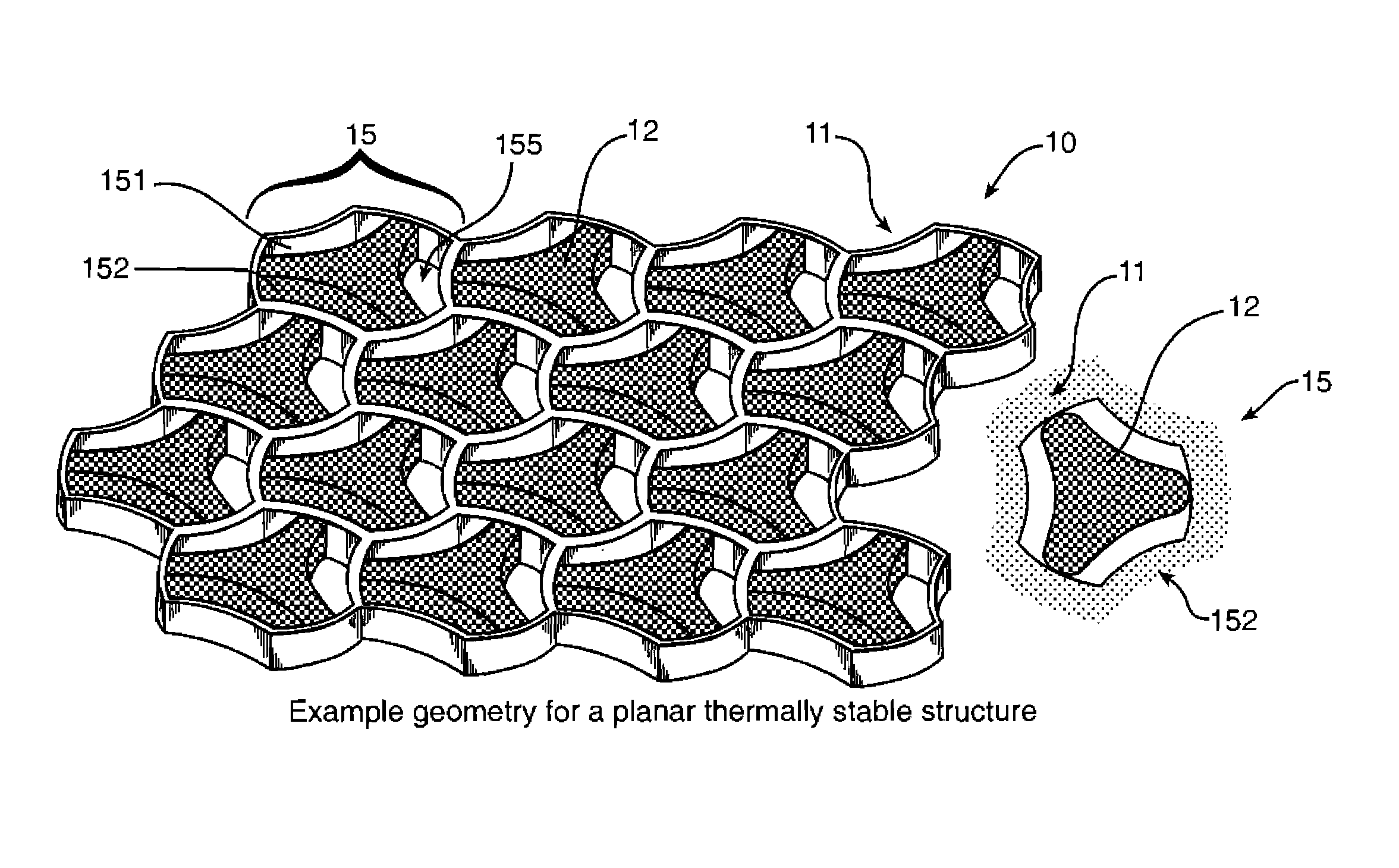Bi-material composite structure with reduced thermal expansion
a composite structure and composite material technology, applied in the direction of cosmonautic thermal protection, machines/engines, cosmonautic vehicles, etc., can solve the problems of one-dimensional thermal stability, complex pin-jointed design, and design challenges
- Summary
- Abstract
- Description
- Claims
- Application Information
AI Technical Summary
Benefits of technology
Problems solved by technology
Method used
Image
Examples
Embodiment Construction
[0062]An example of a thermal structure 10 is shown in FIG. 1. A continuous honeycomb structure 11 is fabricated of one material. The material may have a coefficient of thermal expansion greater than 0.0. The honeycomb structure 11 includes a plurality of cells 15, which have cell sides 151 forming a cell opening 155. The cells 15 also have a top surface 152. An insert 12 made of preferably a second material with preferably a different Coefficient of thermal expansion (CTE) also greater than 0.0 is inserted in the cell opening 155 or formed as part of each cell 15. Preferably the CTE of the insert 12 material is greater than the CTE of the honeycomb structure 11 material. The inserts 12 may be permanently bonded or simply press-fit, therefore allowing flexibility to design with a wide variety of constituents. The inserts may be flush with the top surface 152, below the top surface 152 or in alternate embodiments extend above the cell top surface 152. In alternate embodiments the ins...
PUM
| Property | Measurement | Unit |
|---|---|---|
| Angle | aaaaa | aaaaa |
| Temperature | aaaaa | aaaaa |
| Structure | aaaaa | aaaaa |
Abstract
Description
Claims
Application Information
 Login to View More
Login to View More - R&D
- Intellectual Property
- Life Sciences
- Materials
- Tech Scout
- Unparalleled Data Quality
- Higher Quality Content
- 60% Fewer Hallucinations
Browse by: Latest US Patents, China's latest patents, Technical Efficacy Thesaurus, Application Domain, Technology Topic, Popular Technical Reports.
© 2025 PatSnap. All rights reserved.Legal|Privacy policy|Modern Slavery Act Transparency Statement|Sitemap|About US| Contact US: help@patsnap.com



